You may have noticed that most of the songbirds have stopped singing and are either preparing to nest again or, more likely, just help their fledglings along while simultaneously nudging them away. Young-of-the-year ospreys have either already fledged or are standing in their nests flapping their wings in earnest as they anticipate the moment of departure.
Outdoors
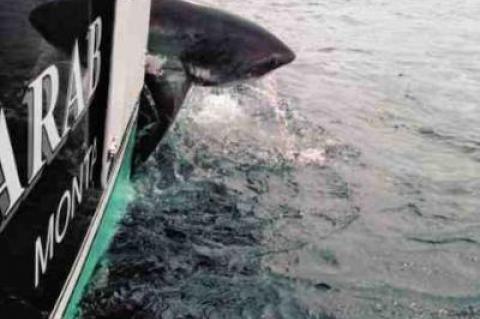 Three More Sharks to Follow
Three More Sharks to FollowSendero Luminoso, the organization of Maoist revolutionaries of Peru, always comes to mind when I’m offshore on a boat that’s shark fishing. This only makes sense because of the dream state one drifts into while, well, drifting, as the crew spills ground fish and fish chunks overboard to create un sendero luminoso, a shining path that wanders toward the horizon as time passes, a route for hungry sharks to follow until they meet the boat’s baited hooks.
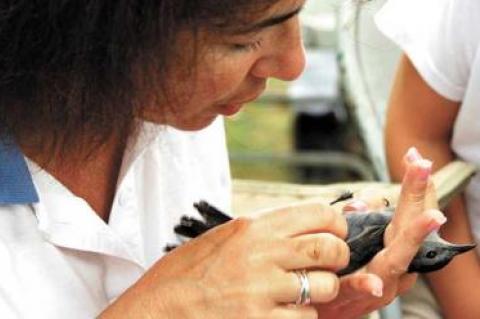 Climate Change Alters Nature's Song
Climate Change Alters Nature's SongHigh mercury levels in East Coast marshes could wipe out some bird species, according to researchers.
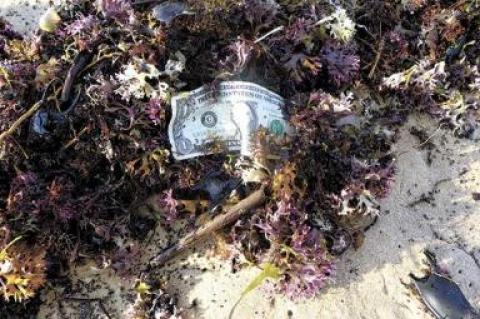 Montauk’s Money Tide
Montauk’s Money TideMy son-in-law stood over the stove Monday evening stirring diced vegetables that would go into bass cakes along with a medley of spices, an egg as binder, and crackers crumbled by hand. The 40-pound striped bass providing the substance of the cakes was speared on Saturday by the same man stirring the veggies.
 Nature Notes: Gypsy Moths 2016
Nature Notes: Gypsy Moths 2016Just about every school kid in the East knows about gypsy moths. If you asked them what one looks like, though, they’d be hard pressed to describe it.
 Nature Notes: More or Less?
Nature Notes: More or Less?Well here we are well into summer and the birds have successfully fledged many of their young. Will they go for a second brood? Piping plovers are one of those species that tries and tries again if it fails the first time around.
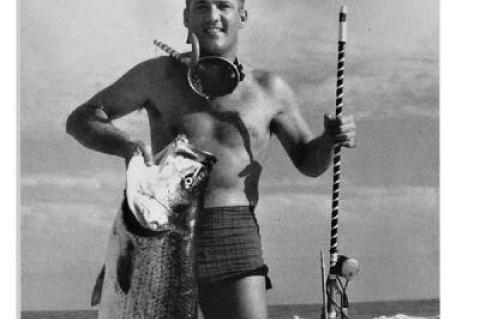 Part Man, Part Fish
Part Man, Part FishGeorge Knoblach turns 90 today. Like many a Montauk resident, George “discovered” this place during his family’s summer camping trips to Hither Hills State Park — only much earlier than most.
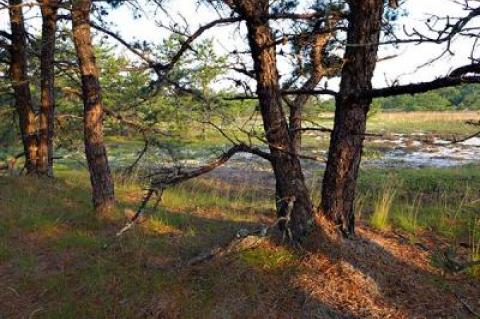 Nature Notes: From Bog to Forest
Nature Notes: From Bog to ForestThe inch or so of rain we had on Saturday and Sunday morning really greened up the open spaces. It was readily apparent on driving around the outback areas of Southampton and East Hampton on Monday. The vegetation had been getting thirsty. Its thirst was thusly quenched.
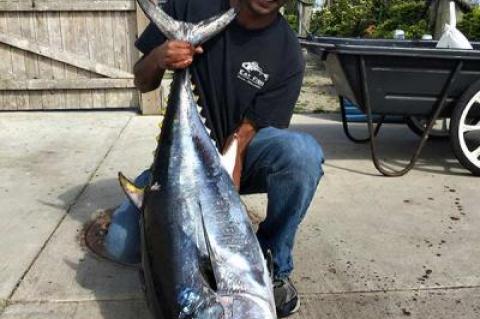 An Eye on the Shark’s Eye
An Eye on the Shark’s EyeThis season’s no-kill shark fishing tournament is named the Carl Darenberg Memorial Shark’s Eye Tournament after the late owner of the Montauk Marine Basin who broke with precedent by maintaining the Marine Basin’s exciting tradition of shark tournaments while sparing the lives of sharks.
Monday night was delicious. It was quiet and as late as 9 objects big and small could still be discerned with the naked eye without the addition of artificial lighting. It was a perfect night to go out and scour the woods and fields for whippoorwills, without leaving the driving seat of my vehicle. So that’s what I did.
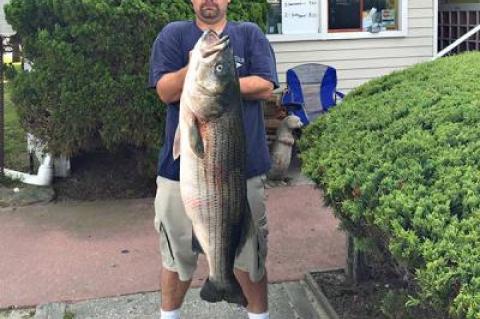 We Are Predators and Prey
We Are Predators and PreyI had lunch at the Inlet Seafood restaurant in Montauk on Monday afternoon. There were five of us, one of whom pulled out his smartphone as we waited with delicious anticipation for sushi, mussels, and broiled mahi sandwiches.
 Change of Command at Coast Guard Station Montauk
Change of Command at Coast Guard Station MontaukSenior Chief Petty Officer Jason Walter handed the helm to incoming Senior Chief Petty Officer Eric Best. He then retired after 21 years of service to his country, and, by all accounts, extraordinary service to the Montauk and East Hampton communities during his last assignment.
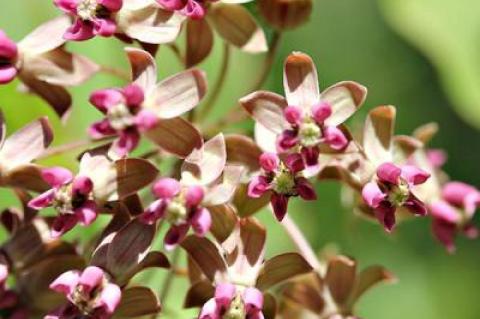 Nature Notes: A Lushness Value of Nine
Nature Notes: A Lushness Value of NineIt rained and winded Monday, not a good day for taking pictures of plants and flowers. But it was okay. We needed the rain and I hope it won’t be the end of it during the coming summer. It was okay because I had finished doing my annual end-of-spring gypsy moth and groundcover monitoring for 2015.
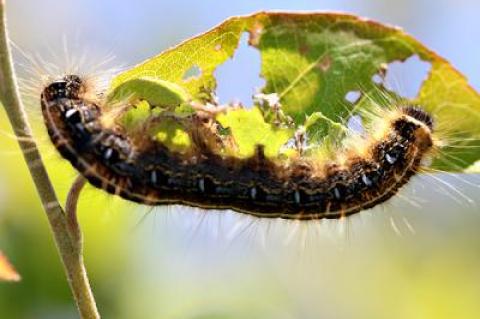 Nature Notes: Want Butterflies? Go Native
Nature Notes: Want Butterflies? Go NativeIt’s the peak of the breeding season for almost every bird, mammal, reptile, amphibian, and fish, not to mention shellfish and crustaceans. It’s also the middle of the landscaping and gardening season, when lots are being cleared, new houses constructed, lawns planted with exotic shrubs, trees, and forms.
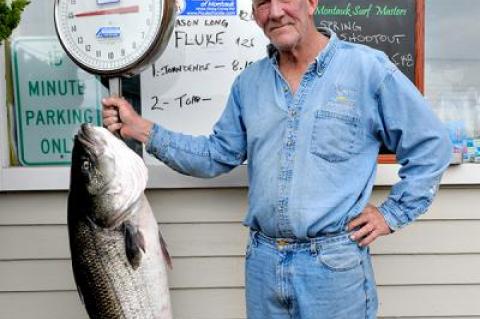 Under the Full Moon
Under the Full MoonThis time of year the very thought of the full moon illuminates the imaginations of fishermen of all stripes, whether they lower clam bait, live eels, or cast lures of many disguises in hopes of hooking Morone saxitilis, striped bass.
 Nature Notes: Bunker on the Wind
Nature Notes: Bunker on the WindLong Island had two big fish kills in its inshore waters last week — one in Manhasset Bay, another in the western part of the Peconic Estuary. These two kills involved a single species that is famous for its periodic mass die-offs up and down the Atlantic Coast — the menhaden, Brevoortia tyrannus.
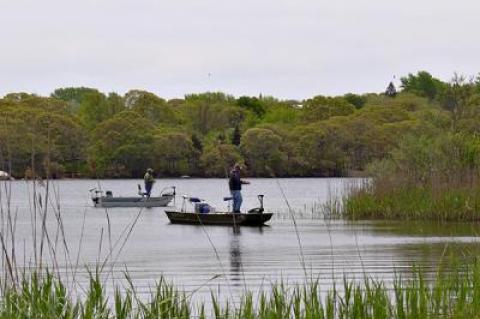 The Mark of Cain
The Mark of CainThe die-off in Flanders of tens of thousands of bunker (menhaden) that peaked on Friday has been blamed on extremely low levels of oxygen in the Peconic Estuary due to an excess of nitrogen, which in turn brought on the “mahogany tide,” a dense brown algal bloom.
The East Hampton Volunteer Ocean Rescue Squad in a flier wants it known that this week, beginning on Sunday, is National Beach Safety Week, and, in keeping with the theme, has provided the following desiderata:
On Sunday, Mary Lee’s dorsal fin broke the surface a few miles off the eastern shore of Virginia at 10:29 a.m., prompting a ping to sail aloft, bounce off a satellite, and report to the OCEARCH organization, whose website transmits the information in very close to real time.
Which came first, the chicken or the egg? Well, if you believe in evolution the answer is easy.
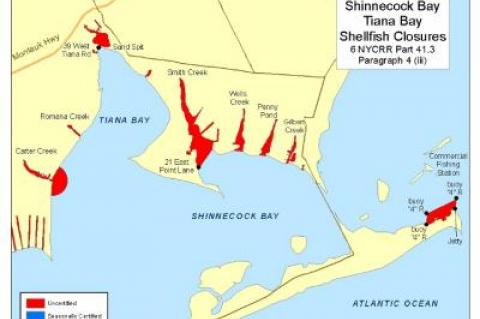 State Reopens Shellfishing Areas, Warns of Blue-Green Algae in Southampton
State Reopens Shellfishing Areas, Warns of Blue-Green Algae in SouthamptonApproximately 3,600 acres of Shinnecock Bay were reopened on Friday after being closed for two weeks after saxitoxin was found. Warnings were issued the same day for potentially harmful blue-green algae in two Southampton ponds.
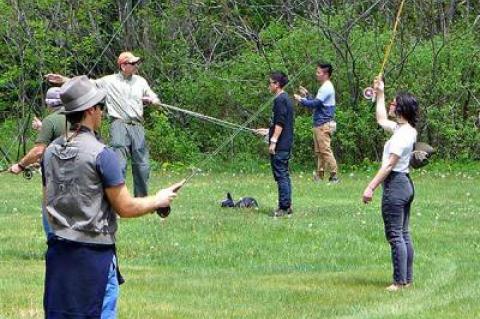 From the Mighty Falls
From the Mighty FallsI’m writing this heading back to saltwater from Buffalo and my first-ever visit to Niagara Falls. We crossed into Canada to view the three sections of Gahnawehta, as the Indians called them, to go aboard the vessel Hornblower — the equivalent of the Maid of the Mist from the United States side — to view the cascades from below.
We just had a glorious weekend in which all the hardwoods, save for the white oaks, which always are the last to foliate, were festooned with fresh green leaves. Thus it was a perfect setting for the arrival of the New World warblers, which every year near the middle of May stop on Long Island to feed and rest after a long flight from their southern winter climes.
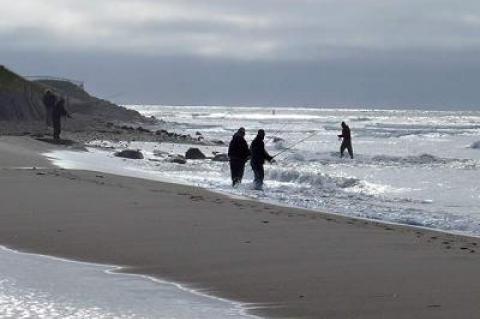 Fog Rolls In, So Do Fish
Fog Rolls In, So Do FishIn May, the sea draws a gauzy shroud over the southerly half of Montauk just as a blanket of white blossoms eases winter’s final chill. It’s as though the light, ghostly fog whispers a wakeup to the shadblow, “You can come out now.”
It’s getting warm. We need some rain. The small rainwater ponds are drying up, the peepers are barely peeping, but the shads are blooming nicely and the dogwoods are out at the same time.
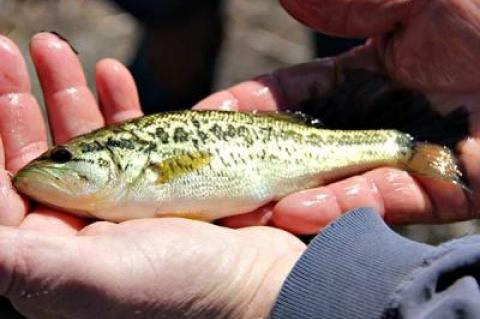 Nature Notes: A Montauk Pond Tour
Nature Notes: A Montauk Pond TourThe weekend was a blaze of glory. The sun shone, the bay waters were mostly calm, the shads and sweet cherries began to bloom to the west, and the shads along Napeague and in Montauk were on the verge of busting out.
 Finding the Sweet Spot
Finding the Sweet SpotI’ve been researching how waves are formed in order to create, and by July present, a narrated video explanation for visitors to the new Oceans Institute of the Montauk Lighthouse Museum. We hope to open the doors by the Fourth of July.
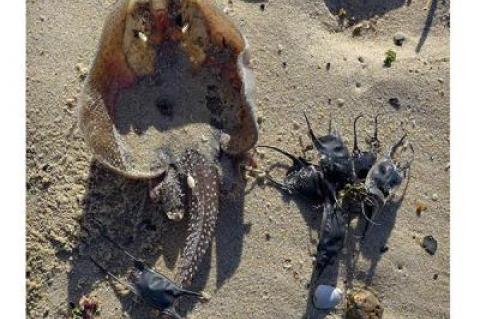 Mermaid Purses’ Treasures
Mermaid Purses’ TreasuresLet’s face it, if skates, with their bat wings and rat tails, flew in the sky instead of along the bottom of the sea, we’d run inside like cave people fleeing pterodactyls and wait for them to pass.
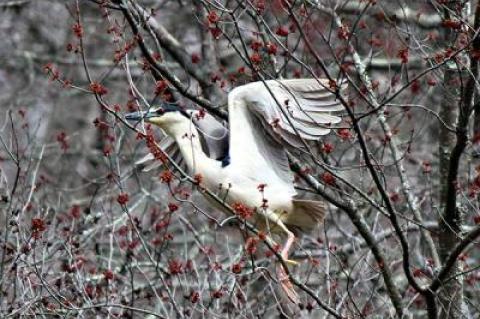 Nature Notes: If It’s Not One Thing . . .
Nature Notes: If It’s Not One Thing . . .The current building boom has laid down a lot of big trees before they had a chance to leaf out, but it apparently hasn’t deterred the birds from returning from the south.
 The Scent of the Sea
The Scent of the SeaI walked east along the rocky beach from Ditch Plain into the Montauk moorlands on Friday. The day before I’d learned a new word, “brumous.” It describes a heavy mist, a good word for Friday, for this place and time of year.
Pagination
Copyright © 1996-2024 The East Hampton Star. All rights reserved.


